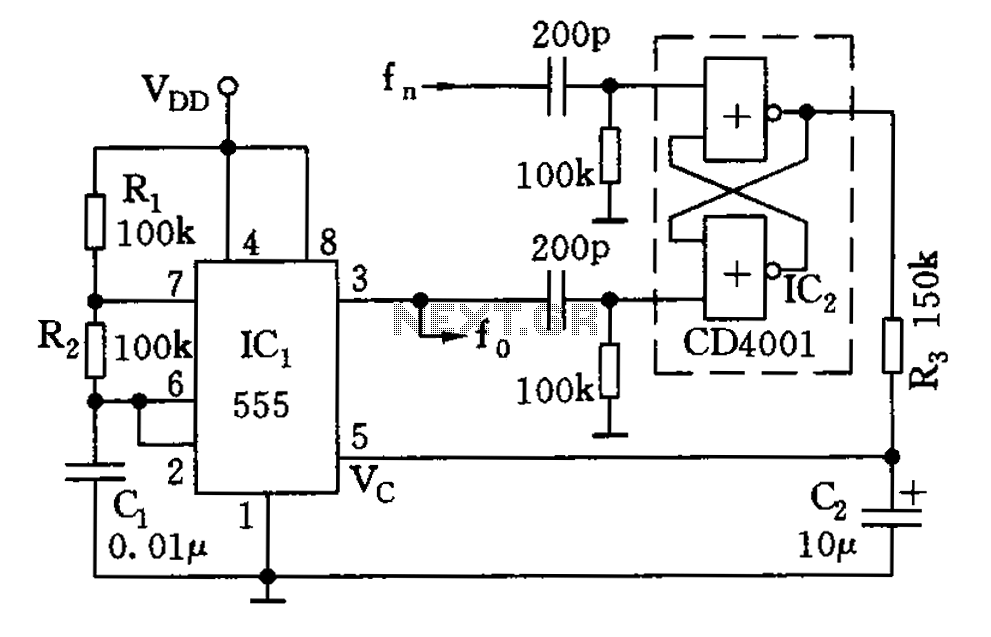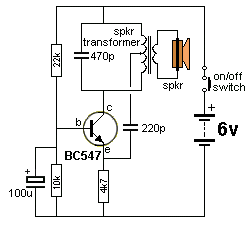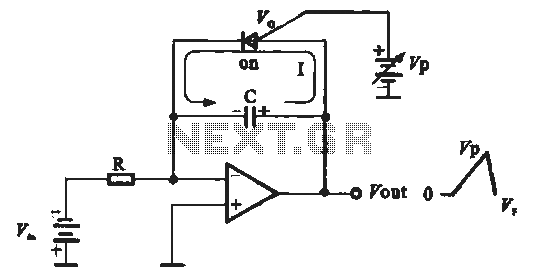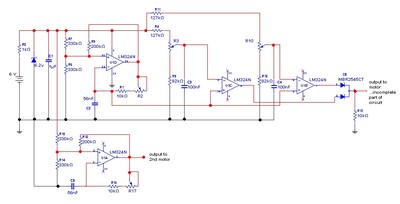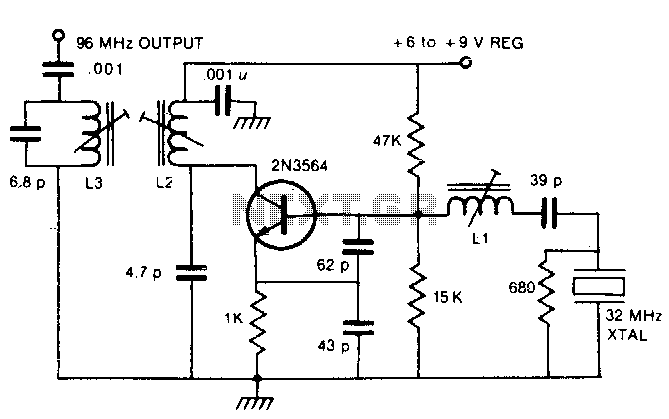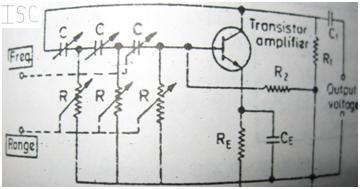
100MHz Varicap Oscillator
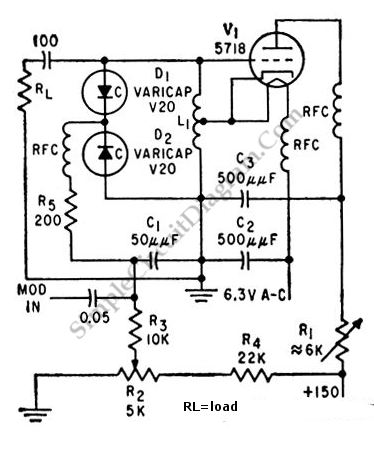
This is a 100 MHz Varicap Oscillator circuit. This circuit can provide modulation signals of less than 28 V and a frequency deviation of 28 MHz peak-to-peak.
The 100 MHz Varicap Oscillator circuit is designed to generate high-frequency signals suitable for various modulation applications. The core component of this circuit is the varicap diode, which functions as a voltage-controlled capacitor. By varying the reverse bias voltage applied to the varicap, the capacitance changes, allowing for the tuning of the oscillator frequency.
The oscillator typically employs a Colpitts or Hartley configuration, which utilizes inductors and capacitors to establish the resonant frequency. In this case, the circuit is optimized to operate at a frequency of 100 MHz. The modulation signals produced can reach a maximum amplitude of less than 28 V, making the circuit suitable for interfacing with other electronic components or systems.
Frequency deviation is a critical parameter in modulation schemes, and this circuit is capable of achieving a peak-to-peak frequency deviation of 28 MHz. This allows for effective modulation of the carrier signal, which is essential in applications such as frequency modulation (FM) transmission.
The circuit design may also incorporate additional components such as amplifiers and filters to enhance signal integrity and ensure stable operation across the desired frequency range. Proper biasing and impedance matching techniques are necessary to maintain optimal performance and minimize signal distortion.
Overall, the 100 MHz Varicap Oscillator circuit is a versatile solution for generating high-frequency modulation signals, suitable for various communication and signal processing applications.This is a 100MHz Varicap Oscillator circuit. This circuit can provide modulation signals less than 28V and frequency deviation of 28 MHz peak-to-peak. This . 🔗 External reference
The 100 MHz Varicap Oscillator circuit is designed to generate high-frequency signals suitable for various modulation applications. The core component of this circuit is the varicap diode, which functions as a voltage-controlled capacitor. By varying the reverse bias voltage applied to the varicap, the capacitance changes, allowing for the tuning of the oscillator frequency.
The oscillator typically employs a Colpitts or Hartley configuration, which utilizes inductors and capacitors to establish the resonant frequency. In this case, the circuit is optimized to operate at a frequency of 100 MHz. The modulation signals produced can reach a maximum amplitude of less than 28 V, making the circuit suitable for interfacing with other electronic components or systems.
Frequency deviation is a critical parameter in modulation schemes, and this circuit is capable of achieving a peak-to-peak frequency deviation of 28 MHz. This allows for effective modulation of the carrier signal, which is essential in applications such as frequency modulation (FM) transmission.
The circuit design may also incorporate additional components such as amplifiers and filters to enhance signal integrity and ensure stable operation across the desired frequency range. Proper biasing and impedance matching techniques are necessary to maintain optimal performance and minimize signal distortion.
Overall, the 100 MHz Varicap Oscillator circuit is a versatile solution for generating high-frequency modulation signals, suitable for various communication and signal processing applications.This is a 100MHz Varicap Oscillator circuit. This circuit can provide modulation signals less than 28V and frequency deviation of 28 MHz peak-to-peak. This . 🔗 External reference
